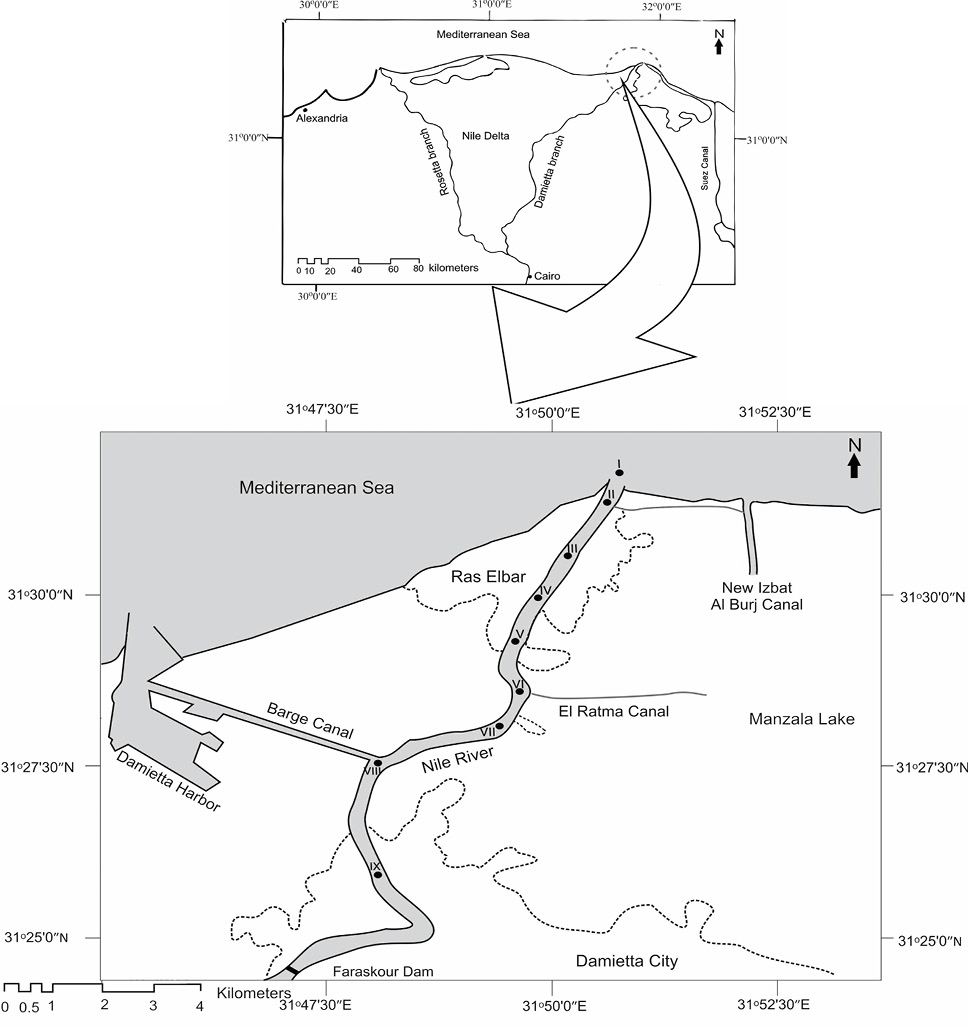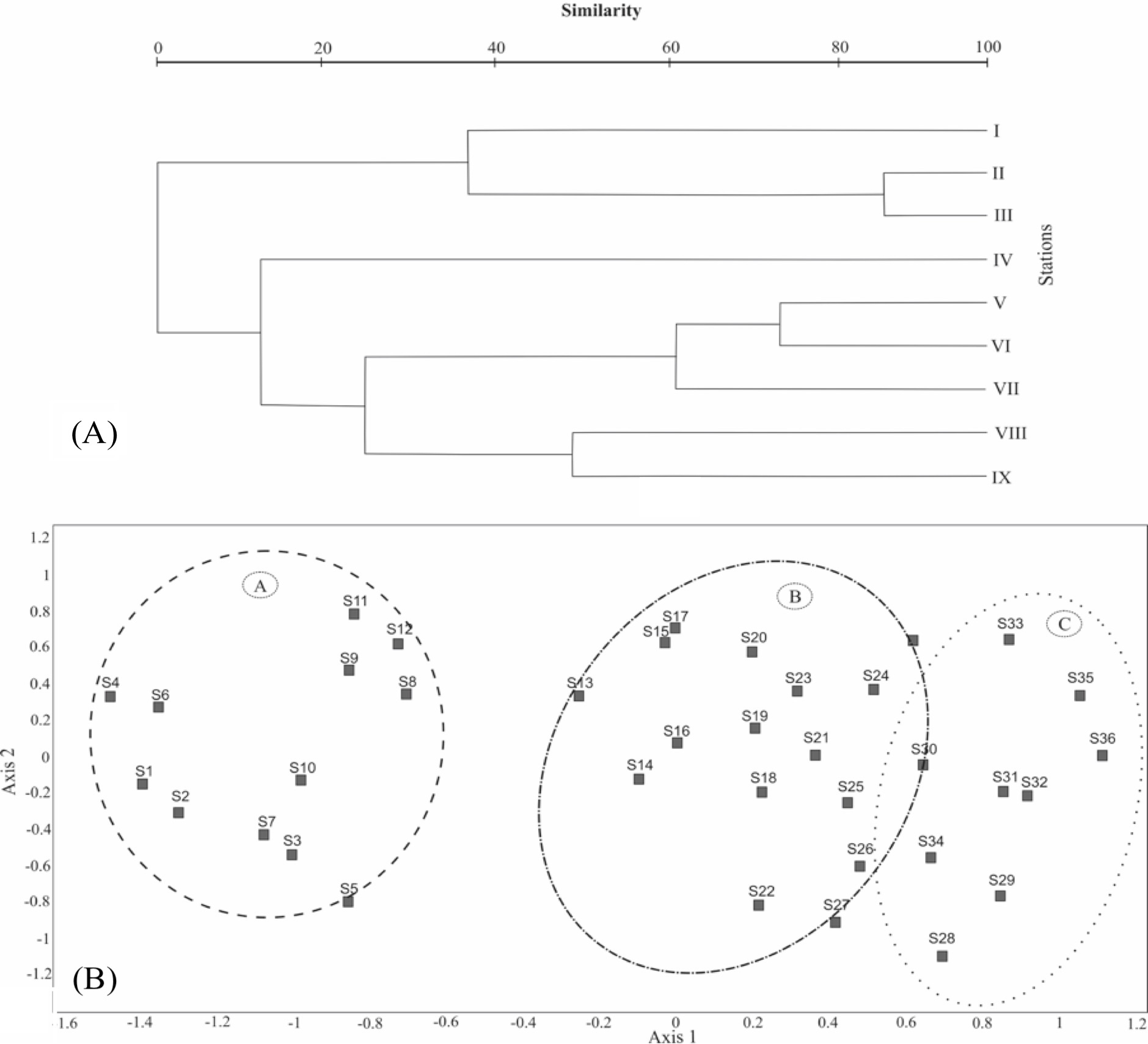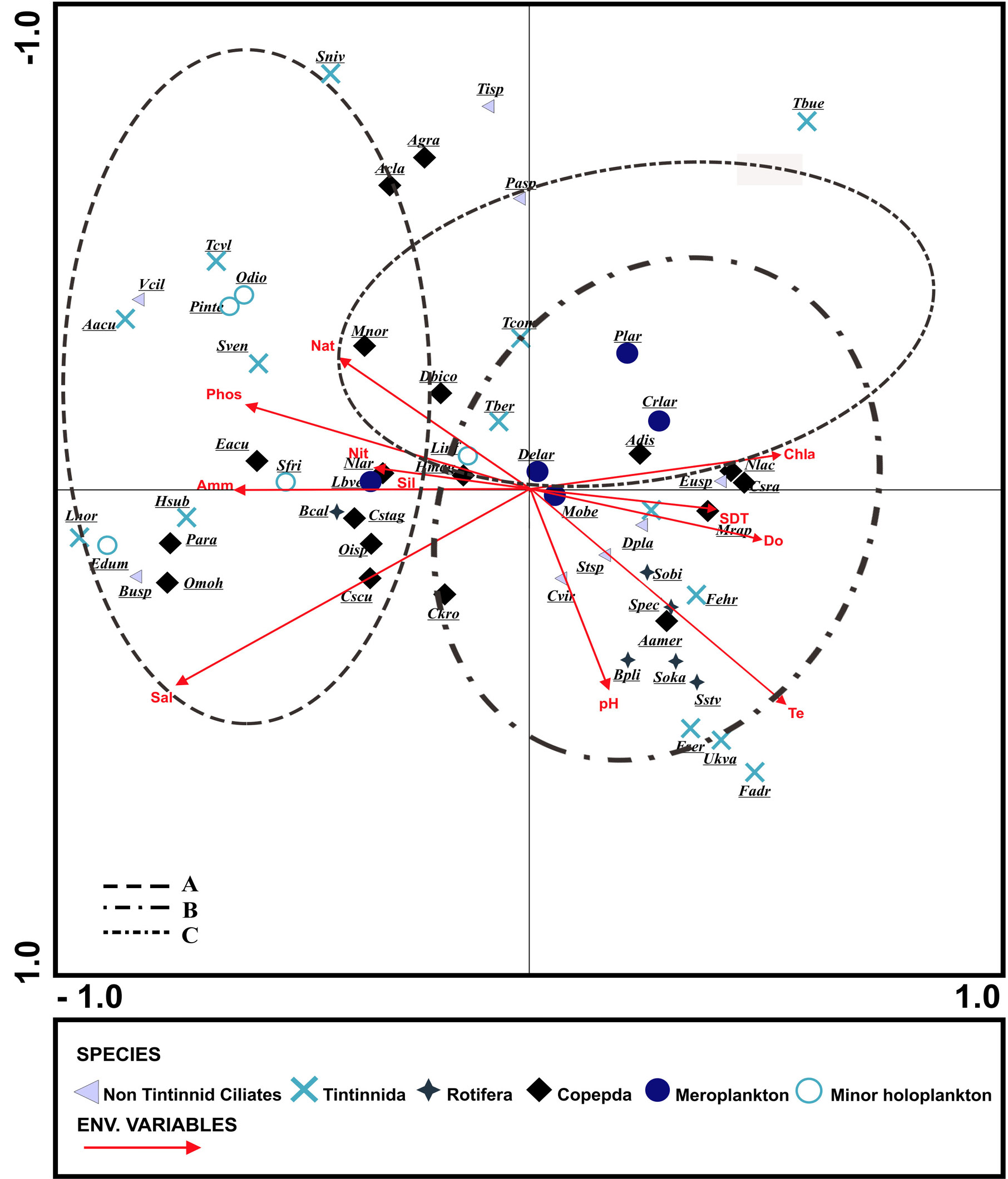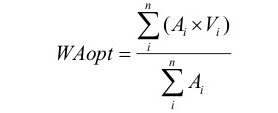Environmental Determinants of Zooplankton Community in the Damietta Estuary of the Nile River, Egypt
Environmental Determinants of Zooplankton Community in the Damietta Estuary of the Nile River, Egypt
Wael S. El-Tohamy1,*, Russell R. Hopcroft2 and Nagwa E.M. Abdel Aziz3
Map of the study area showing the positions of the sampling stations.
Seasonal variations of zooplankton species number (A) and abundance (B) at the sampled stations.
Identification of station groups based on the results of (A) Bray-Curtis clustering and (B) non-metric MDS ordination both using data from station matrix. Letters from S1 to S36 denote for the sampling stations in the four seasons. A, B and C are estuary downstream, midstream, and upstream, respectively.
Ordination diagram by CCA analysis of the important zooplankton taxa as a function of environmental variables (See Table VI for some abbreviations, other abbreviations are Amphorellopsis acuta (Aacu), Bursaridium sp.(Busp), Climacostomum virens (Cvir), Euplotes sp. (Eusp), Dichilum platessoides (Dpla), Favella adriatica (Fadr), Helicostomella subulata (Hsub), Stenosemella nivalis (Sniv), S. ventricosa (Sven), Strobilidium sp. (Stsp), Tillina sp. (Tisp), Tintinnopsis beroidea (Tber), T. cylindrica (Tcyl), Vasicola ciliata (Vcil), Undella hyalina (Uhya), Brachionus calyciflorus (Bcal), B. plicatilis (Bpli), Ectopleura dumortierii (Edum), Acartia grani (Agra), Centropages kroyeri (Ckro), Clytemnestra scutellata (Cscu), Diacyclops bicuspidatus odessanus (Dbico), Microsetella norvegica (Mnor), Onychocamptus mohammed (Omoh), Evadne tergestina (Eter), and Limacina inflata (Linf)). Temp (temperature), SDT (Sechi disk Transparency), Sal (salinity), Sil (SiO3), Amm (NH4), Nit (NO2), Nat (NO3), Phos (PO4), and Chla (chlorophyll a). A, B, and C are estuary downstream, midstream, and upstream, respectively.














